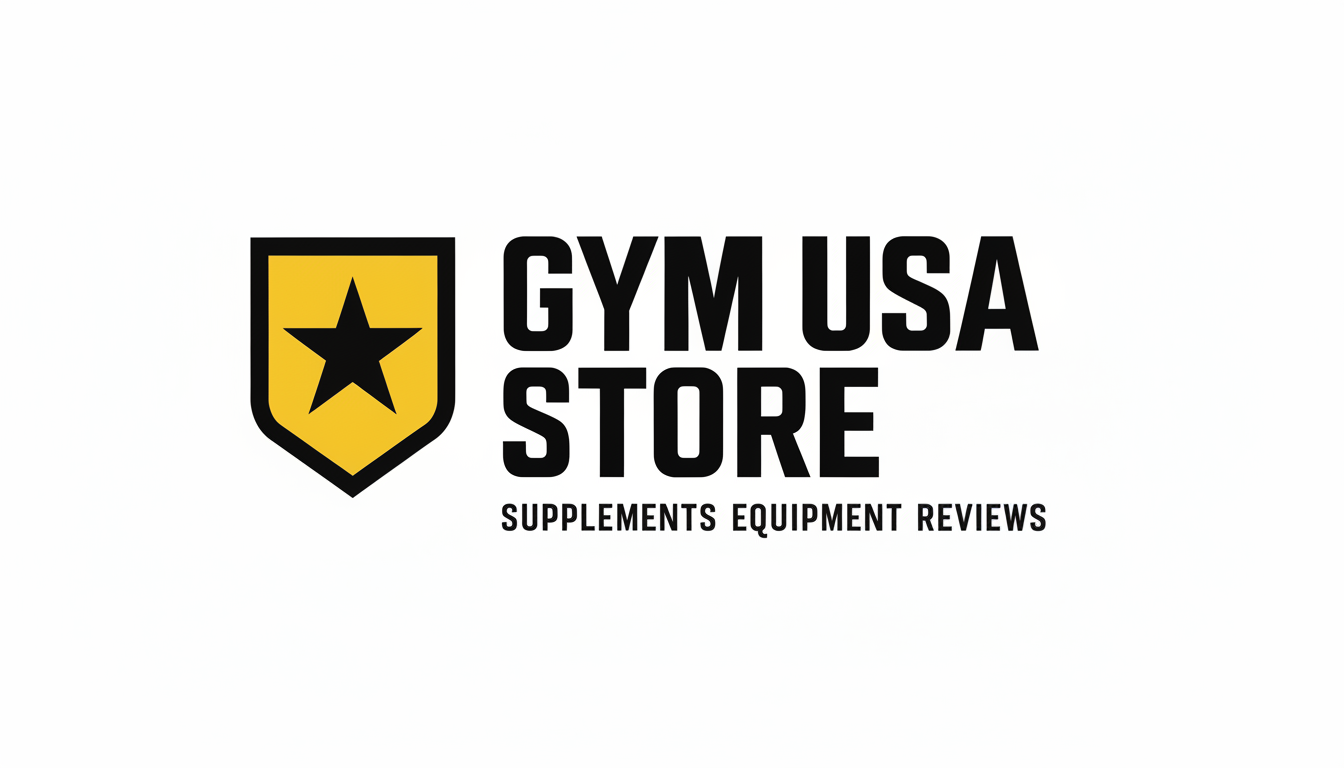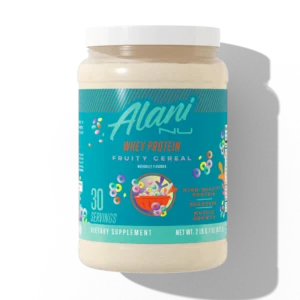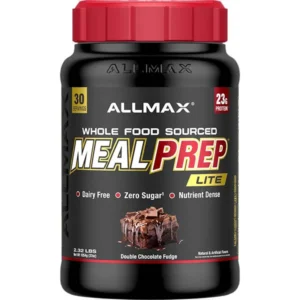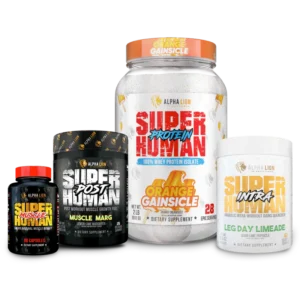For many men, turning 50 feels like a significant milestone. While it brings a wealth of experience and wisdom, it can also be accompanied by concerns about physical decline, particularly the loss of muscle mass and strength. The good news is that you don’t have to accept this as an inevitable part of aging. With the right knowledge, a well-structured exercise plan, and a commitment to your health, you can build muscle, increase your strength, and feel more vibrant and energetic than ever before. This comprehensive guide is designed specifically for men over 50 who are ready to take control of their fitness and transform their bodies. We will delve into the science behind muscle building in your 50s, provide a detailed, day-by-day gym workout plan, and offer expert advice to help you on your journey to a stronger, healthier you.
Why Muscle Matters More Than Ever After 50
As we age, our bodies undergo natural changes that can impact our physical capabilities. One of the most significant changes is the gradual loss of muscle mass and strength, a condition known as sarcopenia. This process typically begins around age 30, with most individuals experiencing a 3% to 5% reduction in muscle mass per decade [1]. For men over 50, this decline can accelerate, leading to decreased strength, reduced mobility, and an increased risk of falls and fractures [1].
Another factor contributing to the challenge of muscle building in later years is anabolic resistance. This phenomenon describes the skeletal muscle’s diminished ability to synthesize protein, which is essential for muscle growth and repair [1]. Consequently, it becomes harder for the body to respond to training stimuli and build new muscle tissue as efficiently as it once did.
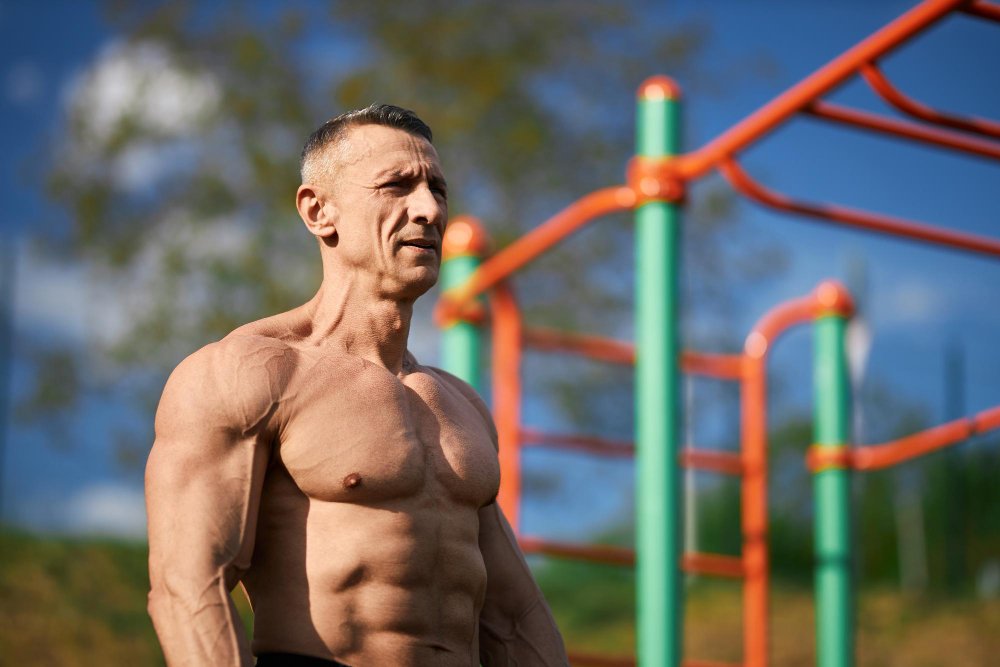
However, these physiological changes do not mean that building muscle after 50 is impossible. On the contrary, engaging in regular strength training offers a multitude of benefits that extend far beyond aesthetics:
•Combating Sarcopenia: Strength training directly counteracts muscle loss, helping to preserve and even increase muscle mass, thereby improving overall strength and functional independence [2].
•Enhanced Bone Density: Lifting weights places stress on bones, stimulating them to become denser and stronger. This is crucial for preventing osteoporosis and reducing the risk of fractures [2].
•Improved Metabolic Health: Muscle tissue is metabolically active, meaning it burns more calories at rest than fat tissue. Increased muscle mass can improve glycemic control, reduce the risk of cardiovascular disease, and aid in long-term weight management [2].
•Better Balance and Mobility: Stronger muscles provide better support for joints and improve overall stability, reducing the likelihood of falls [2].
•Pain Reduction: Strengthening core and back muscles can alleviate chronic back pain and improve posture [2].
•Mental and Emotional Well-being: Regular exercise, particularly strength training, has been shown to improve sleep quality, reduce symptoms of depression, and boost self-confidence and self-esteem [2].
In essence, building and maintaining muscle after 50 is not just about looking good; it’s about investing in your long-term health, vitality, and independence. It’s about ensuring that you can continue to enjoy an active lifestyle and perform daily tasks with ease and confidence.
Key Considerations for Men Over 50 in Strength Training
While the benefits of strength training are universal, men over 50 need to approach their fitness journey with specific considerations in mind. The goal shifts from simply lifting the heaviest weight possible to training smarter, prioritizing longevity, and minimizing the risk of injury [3].
Related Products
-
Alani Nu Whey Protein Fruity Cereal
$44.99 -
Allmax Nutrition Mealprep Lite
$48.99 -
Alpha Lion Mass Monster Stack
Original price was: $268.41.$169.99Current price is: $169.99. -
Animal 100% Whey Protein
$52.45
1. Prioritize Injury Prevention
As highlighted by Men’s Health, for individuals over 50, avoiding injury becomes the paramount priority, even superseding the pursuit of progressive overload [3]. This means:
•Never Work Through Pain: Differentiate between muscle soreness and joint pain. Any sharp or persistent pain should be a signal to stop and assess.
•Avoid Risky Exercises: While compound movements are excellent, exercises that place excessive strain on joints or require extreme mobility might need modification or replacement. For instance, fewer potentially joint-risky barbell exercises may be performed [3].
•Proper Form is Non-Negotiable: Flawless technique is crucial. It’s always better to lift a lighter weight with perfect form than to risk injury with a heavier, poorly executed lift [1]. Consider working with a qualified fitness trainer to ensure your form is correct [1].
2. Embrace Progressive Overload (Smartly)
Progressive overload remains a fundamental principle for muscle growth, but its application needs to be adapted. Instead of constantly chasing heavier weights, focus on other forms of progression:
•Increase Repetitions: Perform more reps with the same weight.
•Increase Sets: Add an extra set to an exercise.
•Decrease Rest Times: Shorten the rest periods between sets.
•Improve Time Under Tension: Slow down the eccentric (lowering) phase of an exercise to increase the muscle’s work.
•Increase Frequency: As the Men’s Health program suggests, training more often (e.g., 4 days a week) can be beneficial, provided adequate recovery is maintained [3].
3. Focus on Compound Movements and Functional Strength
Compound exercises, which involve multiple joints and muscle groups, are highly efficient and effective for building overall strength and muscle mass. These include movements like squats, deadlifts, presses, and rows. Additionally, incorporating exercises that mimic daily activities (functional strength) will enhance your ability to perform everyday tasks with greater ease and reduce the risk of injury outside the gym [1].
4. Emphasize Back and Core Strength
Strengthening the back and core muscles is vital for men over 50. A strong posterior chain supports the spine, improves posture, and enhances overall stability, which is critical for healthy movement and injury prevention [3]. Exercises targeting these areas should be a cornerstone of your program.
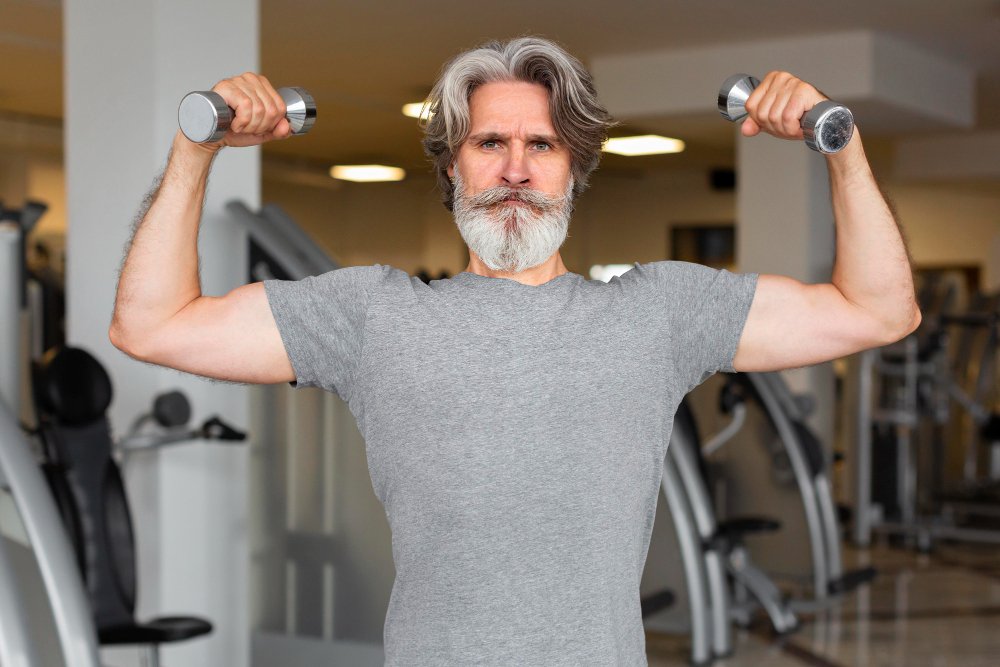
5. Prioritize Recovery and Nutrition
Recovery becomes even more critical as you age. Muscles need adequate time to repair and grow after a workout. This means:
•Adequate Rest: Ensure you get 7-9 hours of quality sleep each night.
•Strategic Rest Days: Incorporate sufficient rest days into your weekly schedule [1].
•Proper Nutrition: A diet rich in protein is essential for muscle protein synthesis. Aim for sufficient protein intake, along with complex carbohydrates and healthy fats, to fuel your workouts and support recovery [1].
•Hydration: Stay well-hydrated throughout the day.
6. Consult Your Doctor
Before embarking on any new exercise regimen, especially if you have pre-existing medical conditions, it is imperative to consult with your physician [1]. They can provide personalized advice and ensure the program is safe and appropriate for your individual health status.
Your Comprehensive Gym Exercise Plan for Men Over 50
This meticulously crafted gym exercise plan is designed for a 53-year-old male aiming to build muscle safely and effectively. It integrates the principles of strength training, injury prevention, and consistent progression, drawing from expert recommendations [1, 2, 3]. The plan is structured as a 4-day split, allowing for optimal muscle recovery and growth, with an optional 5th day for accessory work to target specific areas or enhance overall fitness.
Guiding Principles for Your Workout
Before diving into the exercises, it’s crucial to internalize these guiding principles:
•Prioritize Form Over Weight: This cannot be stressed enough. Maintaining impeccable form is paramount to preventing injuries, especially as you age. Lifting a lighter weight with correct technique is always superior to using a heavier weight with poor form. If you are unsure about your form, consider consulting a certified personal trainer [1].
•Smart Progressive Overload: To stimulate muscle growth, your muscles must be continually challenged. However, for men over 50, this doesn’t always mean adding more weight. Progressive overload can be achieved by gradually increasing repetitions, adding sets, reducing rest times between sets, or improving the time your muscles are under tension during an exercise [3].
•Listen to Your Body: This is perhaps the most important principle. Pay close attention to how your body responds to each workout. Distinguish between muscle soreness (a normal response to effective training) and joint pain (a warning sign). If you experience any sharp, persistent, or unusual pain, stop the exercise immediately and seek professional advice [3]. Adequate rest and recovery are integral components of muscle growth and overall well-being.
•Consistency is Key: Regularity is more important than intensity when starting. Aim to adhere to your workout schedule as consistently as possible. Building muscle is a marathon, not a sprint, and consistent effort over time yields the best results.
•Warm-up and Cool-down: Always begin your workouts with a 5-10 minute dynamic warm-up (e.g., light cardio, joint rotations, dynamic stretches) to prepare your muscles and joints. Conclude with a 5-10 minute cool-down, including static stretches, to improve flexibility and aid recovery [1].
The 4-Day Split Workout Schedule
This plan divides your training across four days, targeting specific muscle groups to ensure sufficient recovery. Rest days are strategically placed to facilitate muscle repair and growth.
•Day 1: Upper Body Push (Chest, Shoulders, Triceps)
•Day 2: Lower Body (Quads, Hamstrings, Calves, Glutes)
•Day 3: Rest
•Day 4: Upper Body Pull (Back, Biceps)
•Day 5: Full Body & Core
•Day 6: Rest
•Day 7: Rest
Day 1: Upper Body Push (Chest, Shoulders, Triceps)
This day focuses on pushing movements that target your chest, shoulders, and triceps. Remember to control the weight throughout the entire range of motion.
| Exercise | Sets | Reps | Rest (seconds) | Notes |
| Incline Dumbbell Press | 3 | 8-12 | 60-90 | Targets the upper chest. Lie on an incline bench (30-45 degrees). Lower dumbbells slowly to the sides of your chest, then press them up, squeezing your chest at the top. Focus on a controlled movement, both on the way up and down. |
| Seated Dumbbell Shoulder Press | 3 | 8-12 | 60-90 | Works the shoulders. Sit on a bench with back support. Press dumbbells overhead until arms are nearly fully extended, then slowly lower them back to shoulder height. Keep your back straight and avoid using momentum. |
| Cable Chest Fly | 3 | 10-15 | 60 | Isolates the chest muscles. Stand in the middle of a cable machine, grab handles, and bring them together in front of your chest. Squeeze your chest at the peak of the movement. |
| Lateral Raises | 3 | 12-15 | 60 | Targets the side deltoids for broader shoulders. Stand with a slight bend in your elbows, raise dumbbells out to the sides until your arms are parallel to the floor. Avoid swinging the weights; use a light weight and focus on the mind-muscle connection. |
| Triceps Pushdowns (Rope or Bar) | 3 | 10-15 | 60 | Isolates the triceps. Stand facing a cable machine, grab the rope or bar, and push it down until your arms are fully extended. Keep your elbows tucked in at your sides. |
| Push-ups (or Knee Push-ups) | 3 | To failure | 60 | A classic bodyweight exercise for chest, shoulders, and triceps. If standard push-ups are too challenging, perform them on your knees. Maintain a straight line from your head to your heels. |
Day 2: Lower Body (Quads, Hamstrings, Calves, Glutes)
This day is dedicated to building strong legs and glutes, which are crucial for mobility, balance, and overall strength. Focus on deep, controlled movements.
| Exercise | Sets | Reps | Rest (seconds) | Notes |
| Goblet Squats | 3 | 8-12 | 60-90 | Excellent for overall leg and core strength. Hold a dumbbell vertically against your chest. Squat down as if sitting in a chair, keeping your chest up and your back straight. Go as deep as comfortable. |
| Romanian Deadlifts (RDLs) | 3 | 8-12 | 60-90 | Primarily targets hamstrings and glutes. Hold dumbbells in front of you. Hinge at your hips, keeping a slight bend in your knees and your back straight, lowering the weights towards the floor. Feel the stretch in your hamstrings. Focus on hinging at your hips and keeping your back straight. |
| Leg Press | 3 | 10-15 | 60 | Works quads, hamstrings, and glutes with less spinal load. Adjust the seat so your knees are bent at 90 degrees. Push the platform away, extending your legs, but don’t lock out your knees at the top of the movement. |
| Leg Curls (Seated or Lying) | 3 | 10-15 | 60 | Isolates the hamstrings. Perform on a leg curl machine, focusing on a strong contraction. Squeeze your hamstrings at the peak of the movement. |
| Calf Raises (Standing or Seated) | 4 | 15-20 | 45 | Targets the calf muscles. Rise up onto the balls of your feet, holding the contraction briefly at the top. Hold for a second at the top of the movement. |
Day 4: Upper Body Pull (Back, Biceps)
This day focuses on pulling movements to strengthen your back and biceps, essential for posture and overall upper body balance. Remember the importance of back work for men over 50 [3].
| Exercise | Sets | Reps | Rest (seconds) | Notes |
| Pull-ups (or Lat Pulldowns) | 3 | 5-10 (or 8-12) | 60-90 | Pull-ups are excellent for back width. If challenging, use an assisted pull-up machine or perform lat pulldowns, focusing on pulling with your back muscles. If you can’t do pull-ups, use an assisted pull-up machine or do lat pulldowns. |
| Bent-Over Dumbbell Rows | 3 | 8-12 | 60-90 | Targets the mid-back. Hinge at your hips, keeping your back straight and core engaged. Pull the dumbbells towards your hips, squeezing your shoulder blades. Keep your back straight and pull the weights towards your hips. |
| Seated Cable Rows | 3 | 10-15 | 60 | Works the middle and upper back. Sit at a cable row machine, keeping your back straight. Pull the handle towards your lower abdomen, squeezing your back muscles at the peak of the movement. |
| Dumbbell Bicep Curls | 3 | 10-15 | 60 | Isolates the biceps. Stand or sit, keeping elbows tucked. Curl the dumbbells up, squeezing the biceps, then slowly lower. Avoid swinging the weights; use a controlled motion. |
| Face Pulls | 3 | 15-20 | 45 | A fantastic exercise for shoulder health, posture, and rear deltoids. Use a rope attachment on a cable machine, pulling it towards your face while externally rotating your shoulders. A great exercise for shoulder health. |
Day 5: Full Body & Core
This day combines full-body movements with dedicated core work, enhancing overall stability, balance, and functional strength. This day is crucial for reinforcing the benefits gained from the previous days and addressing core strength, which is vital for preventing back issues and improving overall movement [2].
| Exercise | Sets | Reps | Rest (seconds) | Notes |
| Dumbbell Lunges | 3 | 10-12 per leg | 60 | Works legs and glutes unilaterally, improving balance. Step forward with one leg, lowering your hips until both knees are bent at approximately 90 degrees. Keep your front knee behind your toes. |
| Plank | 3 | Hold for 30-60 seconds | 60 | Excellent for core stability. Hold a straight line from head to heels, engaging your abs and glutes. Keep your body in a straight line. |
| Bird-Dog | 3 | 10-12 per side | 45 | Improves core stability and coordination. Start on all fours. Extend one arm forward and the opposite leg backward simultaneously, keeping your core stable. A great exercise for core stability. |
| Glute Bridges | 3 | 15-20 | 45 | Activates the glutes and strengthens the lower back. Lie on your back with knees bent, feet flat. Lift your hips off the floor until your body forms a straight line from shoulders to knees. Squeeze your glutes at the top of the movement. |
| Russian Twists | 3 | 15-20 per side | 45 | Targets the obliques. Sit on the floor, lean back slightly, and lift your feet. Twist your torso from side to side, touching the floor beside you. Use a weight for added resistance. |
Optional 5th Day: Arms & Accessory (If you feel recovered and want more)
This day is optional and can be incorporated if you feel adequately recovered and wish to dedicate more focus to arm development or other accessory work. The emphasis here is on lighter weights and higher repetitions to promote muscle hypertrophy and endurance without excessive strain.
| Exercise | Sets | Reps | Rest (seconds) | Notes |
| Hammer Curls | 3 | 12-15 | 45 | Targets both biceps and brachialis for overall arm thickness. Hold dumbbells with palms facing each other and curl them up. |
| Overhead Triceps Extensions (Dumbbell or Cable) | 3 | 12-15 | 45 | Isolates the long head of the triceps. Hold a dumbbell with both hands or use a rope attachment on a cable machine, extending it overhead. |
| Preacher Curls | 3 | 12-15 | 45 | Provides strict isolation for the biceps. Use a preacher curl bench, focusing on a full stretch and contraction. |
| Skull Crushers (EZ Bar or Dumbbell) | 3 | 12-15 | 45 | Targets the triceps. Lie on a flat bench, extending a bar or dumbbells over your chest, then lower towards your forehead by bending at the elbows. |
| Farmer’s Walk | 3 | 30-60 seconds | 60 | Excellent for grip strength, core stability, and overall conditioning. Hold heavy dumbbells in each hand and walk for a set distance or time. |
The Role of Nutrition in Muscle Building After 50
Building muscle is not solely about what you do in the gym; it’s equally, if not more, about what you consume outside of it. As a man over 50, your nutritional needs become even more critical to support muscle protein synthesis, recovery, and overall health. A well-balanced diet, rich in specific macronutrients, is the cornerstone of any successful muscle-building program.
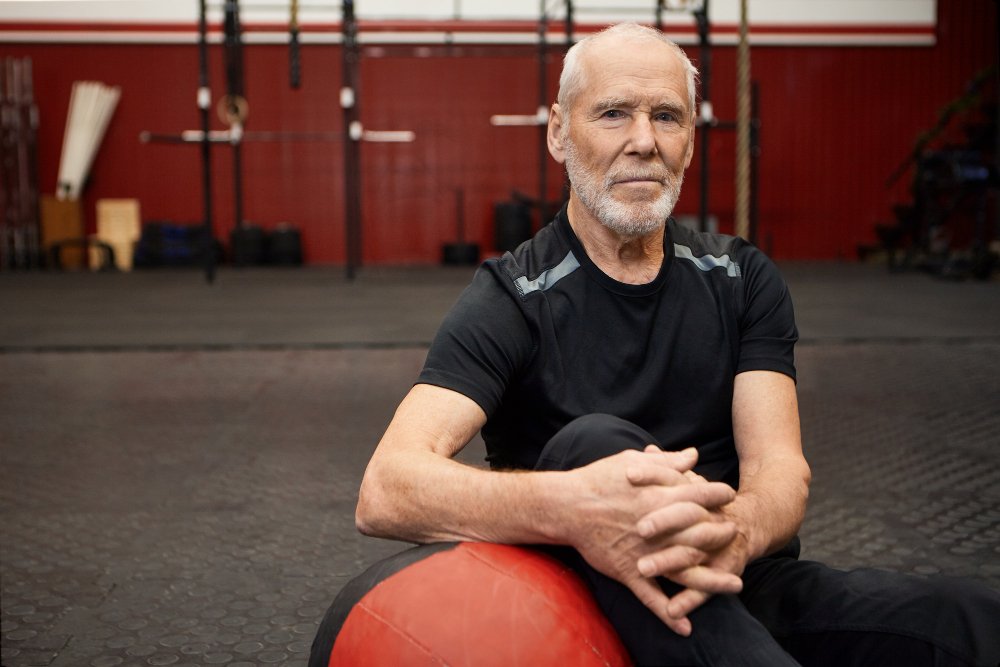
1. Protein: The Building Block of Muscle
Protein is paramount for muscle repair and growth. As we age, the body’s efficiency in utilizing protein for muscle synthesis can decrease, a phenomenon often referred to as anabolic resistance [1]. Therefore, men over 50 should aim for a higher protein intake than younger individuals. Aim for approximately 1.6 to 2.2 grams of protein per kilogram of body weight per day, distributed evenly across your meals [1].
Excellent Protein Sources Include:
•Lean Meats: Chicken breast, turkey, lean beef, pork loin.
•Fish: Salmon, tuna, cod, tilapia (rich in Omega-3 fatty acids, which also aid in reducing inflammation).
•Eggs: A complete protein source, versatile and easy to incorporate.
•Dairy: Greek yogurt, cottage cheese, milk (provide casein and whey protein).
•Legumes: Lentils, beans, chickpeas (plant-based protein, also high in fiber).
•Whey Protein Supplements: Can be a convenient way to boost protein intake, especially post-workout.
2. Carbohydrates: Fuel for Performance and Recovery
Carbohydrates are your body’s primary energy source. They fuel your workouts and replenish glycogen stores in your muscles, which are essential for recovery and future performance. Focus on complex carbohydrates that provide sustained energy and are rich in fiber.
Good Carbohydrate Sources Include:
•Whole Grains: Oats, brown rice, quinoa, whole-wheat bread.
•Starchy Vegetables: Sweet potatoes, potatoes, corn.
•Fruits: Berries, bananas, apples (provide natural sugars and antioxidants).
3. Healthy Fats: Essential for Hormonal Balance and Overall Health
Fats play a crucial role in hormone production, nutrient absorption, and overall bodily functions. Healthy fats, particularly monounsaturated and polyunsaturated fats, are vital for maintaining optimal health and supporting muscle growth.
Sources of Healthy Fats Include:
•Avocado: Rich in monounsaturated fats.
•Nuts and Seeds: Almonds, walnuts, chia seeds, flax seeds (also provide fiber and protein).
•Olive Oil: A staple in Mediterranean diets, excellent for cooking and dressings.
•Fatty Fish: Salmon, mackerel (as mentioned, also great protein sources).
4. Hydration: Often Overlooked, Always Essential
Water is involved in every metabolic process in your body, including muscle protein synthesis and nutrient transport. Dehydration can significantly impair performance and recovery. Aim to drink at least 8-10 glasses of water daily, and more if you are exercising intensely or in a warm environment.
5. Micronutrients and Supplements
While a balanced diet should provide most of your micronutrient needs, certain vitamins and minerals are particularly important for men over 50 engaged in strength training:
•Vitamin D: Crucial for bone health and muscle function. Many older adults are deficient.
•Calcium: Essential for bone density.
•Magnesium: Involved in muscle function and energy production.
•Creatine: One of the most researched and effective supplements for increasing strength and muscle mass. Consult your doctor before starting any new supplement regimen.

The Importance of Rest and Recovery
Your muscles don’t grow during your workout; they grow during the recovery period that follows. For men over 50, adequate rest and recovery are even more critical due to potentially slower recovery rates and the need to prevent overtraining and injury. Neglecting recovery can lead to plateaus, fatigue, and an increased risk of injury.
1. Sleep: The Ultimate Recovery Tool
Aim for 7-9 hours of quality sleep per night. During deep sleep, your body releases growth hormone, which is vital for muscle repair and growth. Establish a consistent sleep schedule, create a dark and quiet sleep environment, and avoid screens before bedtime to optimize your sleep quality.
2. Active Recovery and Deload Weeks
Instead of complete inactivity on rest days, consider active recovery. This could include light cardio, stretching, foam rolling, or gentle yoga. These activities can improve blood flow, reduce muscle soreness, and enhance flexibility without taxing your muscles excessively. Periodically, incorporate a deload week into your training, where you significantly reduce the volume and/or intensity of your workouts. This allows your body to fully recover, adapt, and come back stronger.
3. Stress Management
Chronic stress can elevate cortisol levels, which can hinder muscle growth and promote fat storage. Incorporate stress-reducing activities into your routine, such as meditation, deep breathing exercises, spending time in nature, or engaging in hobbies you enjoy. Managing stress effectively will support your physical recovery and overall well-being.
Unlock Your Potential: A Stronger You Awaits
Embarking on a muscle-building journey after 50 is not just about defying age; it’s about embracing a lifestyle that prioritizes strength, health, and vitality. This comprehensive guide has provided you with the foundational knowledge, a detailed gym exercise plan, and crucial insights into nutrition and recovery tailored specifically for men over 50. Remember, consistency, proper form, and listening to your body are your most powerful tools.
By diligently following this program, fueling your body with optimal nutrition, and prioritizing adequate rest, you are not just building muscle; you are building resilience, enhancing your quality of life, and setting a powerful example for those around you. The journey to a stronger, healthier you begins now. Consult with your doctor, step into the gym with confidence, and unlock the incredible potential that still lies within you.
References
1.WebMD. (2024, February 23). How to Gain Muscle Mass After 50. https://www.webmd.com/healthy-aging/gain-muscle-mass-after-50
2.Centers for Disease Control and Prevention. Growing Stronger: Strength Training for Older Adults. https://stacks.cdc.gov/view/cdc/11447/cdc_11447_DS1.pdf
3.Men’s Health. (2025, July 17). How to Get the Men’s Health Max Muscle at 50 Workout Program. https://www.menshealth.com/fitness/a65436628/max-muscle-at-50-workout/
